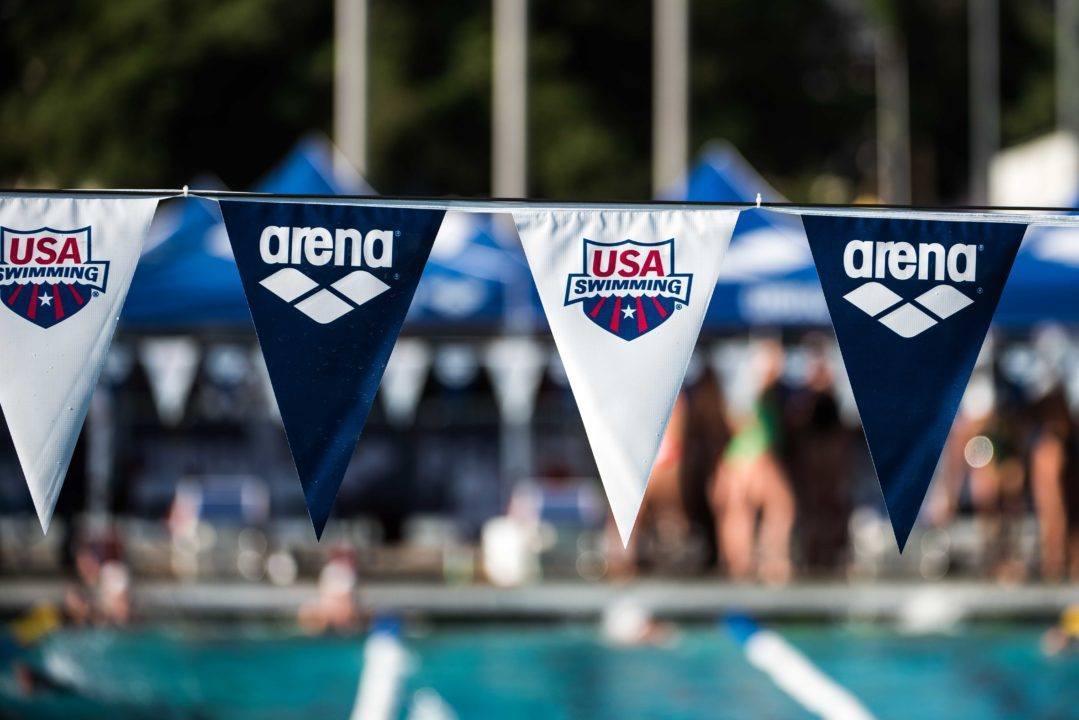USA Swimming’s Rules & Regulations Committee has released its proposed rule changes, and will consider adding a new classification of ‘pre-team’ membership in a September meeting.
Currently, swimmers can register with USA Swimming for 4 levels of membership: an annual membership (which lasts the full year), an ‘outreach’ membership that comes with reduced fees where the local LSC sees fit, an individual seasonal membership (which only runs up to 150 days, for swimmers who will only compete for a specific season) and a single meet membership for use in open water competitions.
The new rule, which will be considered in September, would create a ‘pre-team’ membership. Pre-team USA Swimming members would only pay between $7-$12 a year but would not be eligible to compete at any sanctioned meets. That would theoretically allow kids and families the option of “trying out” the sport without a major financial commitment before getting involved with a full-fledged membership.
A few other rule changes that are recommended for ratification or recommended for rejection by the committee at this point:
- Seasonal membership prices are recommended to be set to be reduced in an effort to expand “participation at all levels of the sport.”
- With that comes a clarification on what level seasonal members can compete at – seasonal members are not able to compete at the Zone level or higher, and a new proposal adds that they cannot compete at the Sectional level or higher as well. That’s not a major change as much as a clarification that both Sectional and Zone level meets are out for seasonal members.
- Another recommended approved rule change proposal would require written permission in advance for a drone to be used at a meet over the top of the pool.
- One recommended rejected rule change would have prohibited chaperones or team managers from sharing a hotel room or sleeping arrangement with an athlete unless the chaperone was a parent, guardian, sibling or spouse of the swimmer.
- Another recommended rejected rule change would have eliminated rules against “illegal recruiting” between clubs, creating what was termed by the proposer as “a free and open marketplace for teams and coaches.”

Who gives permission for the use of drones? And who has to ask for it (the meet host, Meet Director, the LSC who issued the sanction?). That seems pretty vague, unless there is verbiage in that proposal which isn’t included above…
While it is a small category of meets, this will allow the potential for TV coverage using drones at National level meets. The networks are starting to use this technology at football, baseball and basketball events – the rulebook prohibits this currently at swim meets.
Why would they reject the rule about sharing a room with a swimmer?
I can see a couple reasons: 1) As I got older it was not unusual to share a room with an assistant coach and maybe even another swimmer. If the rule could have been tweaked to ensure 3 people were present in the room, it may have gotten closer to what I think they were trying to achieve. 2) they may have balked at the rule b/c a rule like that would take a very large amount of oversight… which leads to 3) liability. If they have a rule on the books, something happens and then its decided they did not monitor properly… hello lawsuit(s).
Example: swimmers sharing room and one of them happens to be severely allergic to peanuts, tree nuts etc. and the chaperone is a physician. Or if one of the athletes is a Paralympian that could use that chaperones help. Or if the rule didn’t specify age and a team manager and swimmer are of 18+, like a pro swimmer?
I’m going off of memory here, but I believe that 12&Under swimmers can be roomed with parent non-athlete chaperones (not coaches) but 13&Older athletes cannot. So I guess the rule change was going to eliminate all shared rooms. I can see why some teams/families might want parental supervision of younger athletes. We don’t do that, but I can see why some would.
The pre- membership is a great idea! As long as the decision to fully commit to meets comes with just paying the remaining difference within the competitive year.
Seems like a good plan if a club wants to run a learn to swim plan. How about reducing the million dollar salaries for usa swimming board members and slashing yearly membership prices to encourage more to participate in the sport.